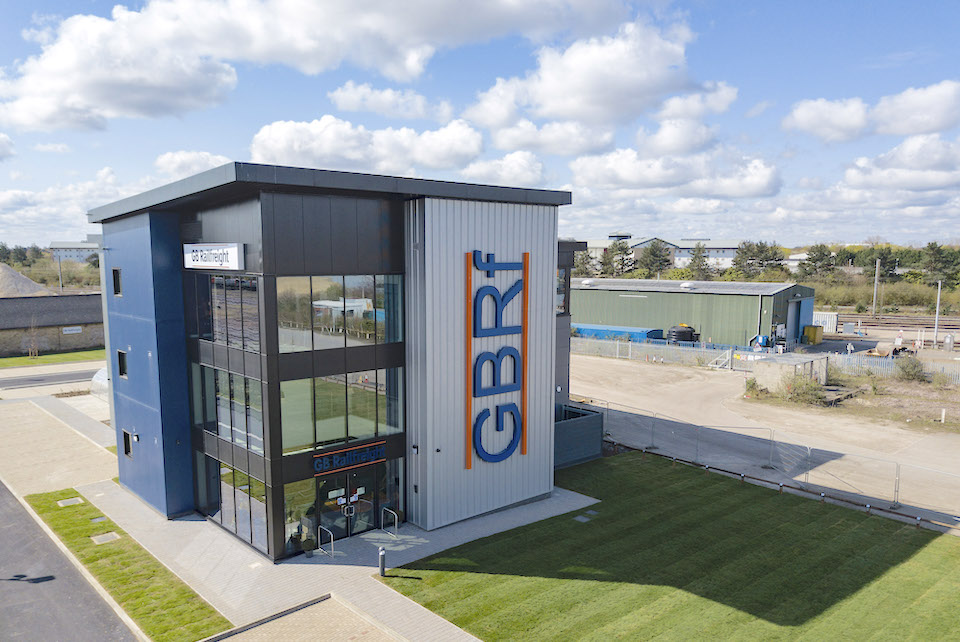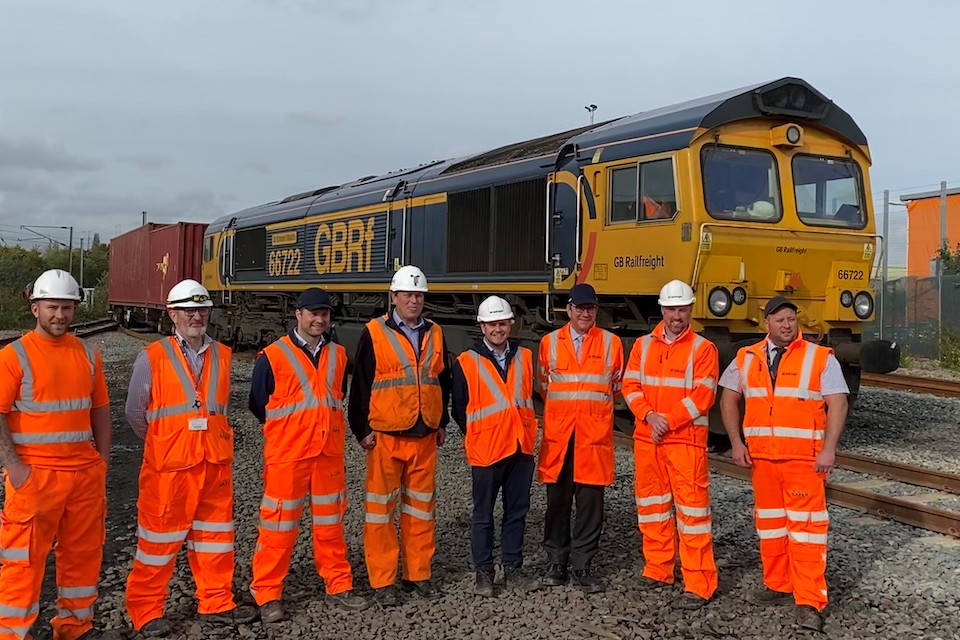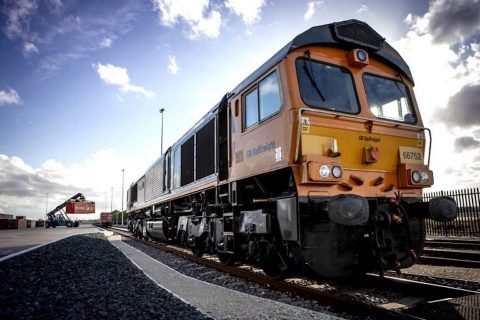GB Railfreight connects new Peterborough sidings

A slight oversight? Perhaps not, but after announcing the opening of their highly visible Peterborough maintenance hub, GB Railfreight (GBRf) has gotten around to actually laying in some rails. The company opened new sidings on the north side of its Peterborough yard, which will connect its 5,75 million pound (6,73 million euros) facility to the national railway network and the East Coast Main Line to which it lies adjacent. The opening represents three years of work between GBRf, Network Rail and railway contractors KGJ Price.
Several new points (switches) have been installed, say GBRf, slewing the existing track to create five intermodal length sidings accessible from both north and south and additional capacity for spare wagons. GBRf has been a busy company of late, announcing plans for an exceptional bust of growth in the coming two years and participating in a high-tech braking system trial with several leading-edge developers.
Starting new connections and services
“The new sidings at the north end of our yard is a huge step forward in bringing our Maintenance Hub into operation”, said John Smith, CEO of GB Railfreight. “This will enable us to run even more intermodal services, allowing our current and future customers to move an even wider range of goods by rail.” About an hour north of London on the busy East Coast Main Line, Peterborough is the operational control centre for GBRf and the hub of much of the company’s activity. The imposing maintenance hub is somewhat more functional in form than the architecturally more striking operations centre building – itself a recent addition to the lineside view. However, on this occasion, Smith was concentrating on the nuts and bolts of the company. “The new sidings will be vital in unlocking the full potential of the Maintenance Hub, which will double the yard’s capacity”, he said. “This investment forms part of GBRf’s ambitious growth plans to run around 80 intermodal services a day by 2025.”
Putting on around a doubling of operational capacity is the biggest single expansion plan in the ambitious company’s 24-year history. The hub plays a part in that, of course, but it’s been a labour of collaboration. “Network Rail have been a part of this project, from initial concept through to property agreements and delivery of signalling solutions”, said Mark Bridel, Regional Freight Manager at the infrastructure agency. “The project supports the shift to rail and green ambitions by enabling maintenance and stabling of longer intermodal trains on the East Coast Main Line.”
Stopping services as well as starting them
The spirit of collaboration is also evident with a successful four-week test of an innovative new solution for monitoring wheel and brake issues. That’s something that’s been most topical, given the publication in the past week of the Rail Accident Investigation Branch report into the crash at Salisbury, where braking was a primary cause of that serious passenger train collision. GBRf has been working with a development partnership with Icomera, DG8 and SENSEi to put what they say is a world-first system that enables battery-powered sensors to remotely share status and out-of-tolerance alerts with drivers and operational control centres whilst they perform vehicle pre-checks.

“Working with industry partners, we have proven the concept of a first-of-its-kind application in the rail sector”, said David Golding, Asset Director, GB Railfreight. “GBRf is really proud to be leading the freight industry by developing these innovative solutions to reduce incidents relating to wheel and brake issues,” GBRf says this Internet of Things (IoT) technology can help to create a safer and more efficient rail network by reducing the number of incidents relating to wheel and brake faults. When using the system, train drivers receive sensor data directly from an application on a tablet in their cabin. This allows them to take immediate action to mitigate against potential wheel or brake-related risk factors and respond to real-time feedback on the results of their actions. Following this successful test, the next set of solutions is currently being developed, with further trials being scheduled. With such an ambitious expansion planned, GBRf would do well to enable all the efficiencies it can.




